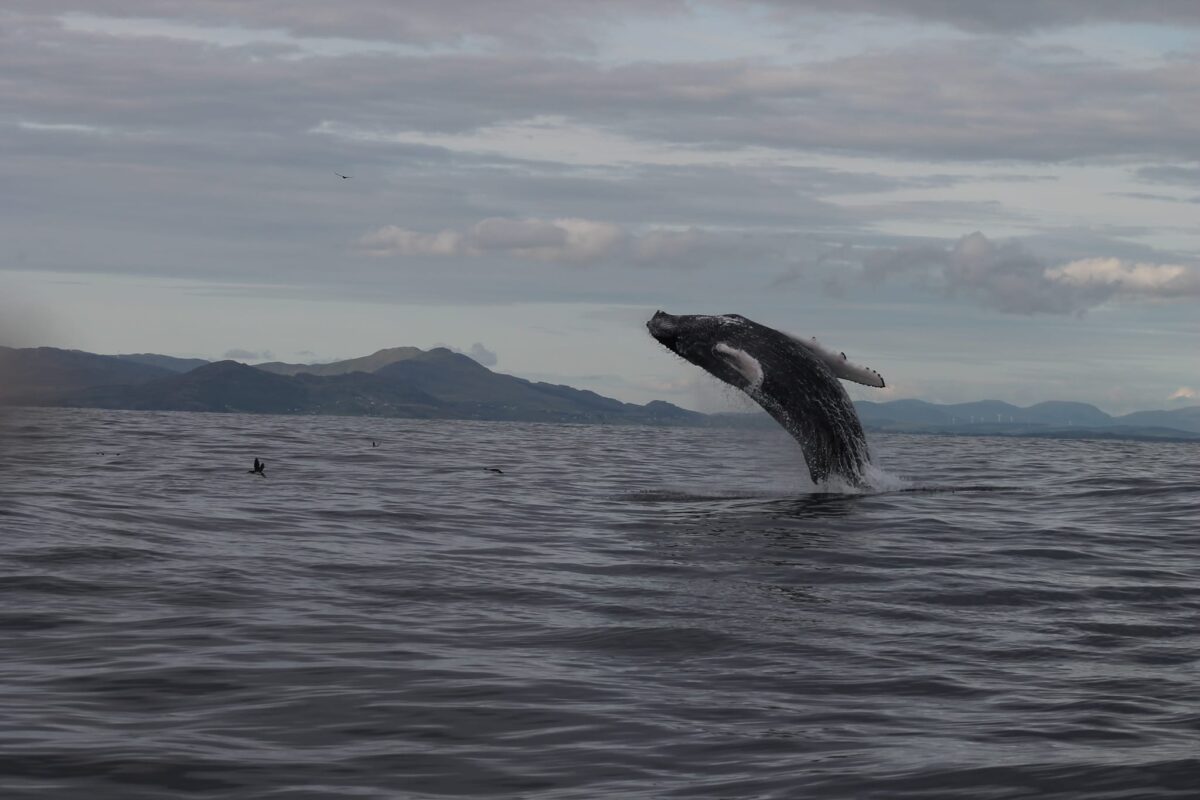Four humpack whales, a fin whale, minke whale and common dolphins were spotted in Donegal Bay last week by marine biologist and Irish Whale and Dolphin Group (IWDG) member Darren Craig.
Having returned to Donegal recently, Darren has been accompanying other members of IWDG on research trips in Donegal Bay on a Rigid Inflatable Boat (RIB).
On June 11th, they encountered a single humpback whale just off Teelin. This whale has stayed in around Donegal Bay for the past month and many people have encountered it on whale watching trips from other vessels. It has also been spotted from land on numerous occasions by the local Sligo IWDG group.
By capturing an image of the underside of the fluke when the whale is diving, the group were able to determine that this individual was #HBIRL24. He has now been documented by IWDG on each of the past 11 years, having been first observed as a calf with its mother #HBIRL17 back in August 2013 off the Blasket Islands in Kerry.
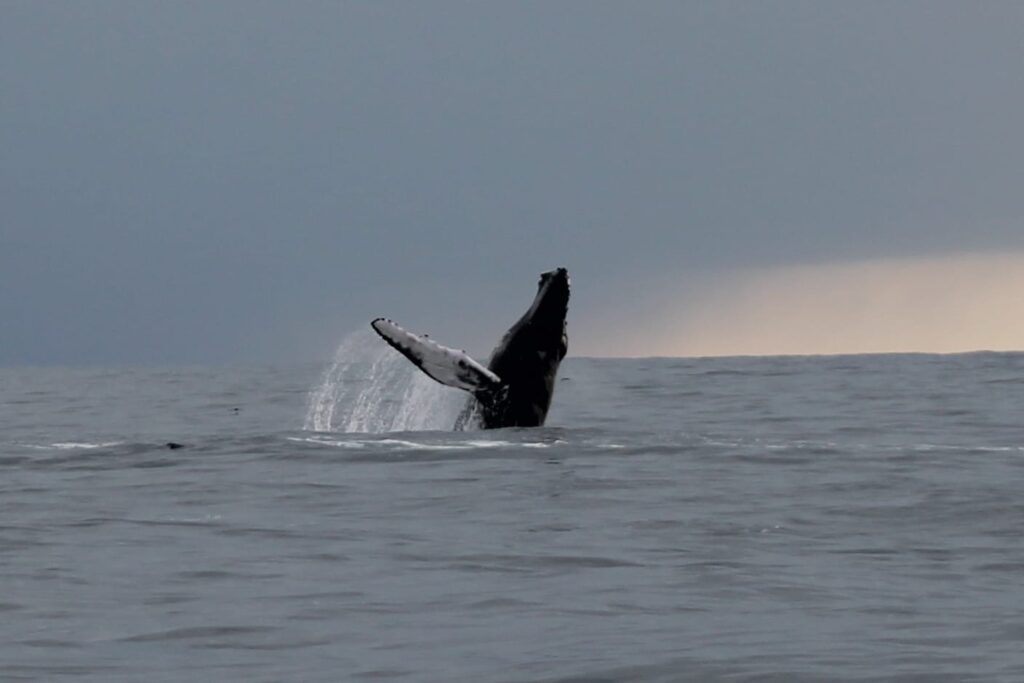
On the July 16th, they headed out in into the bay hoping to encounter the whale. All seemed quiet until some blows were spotted in the distance beyond Inishmurray on the outer part of Donegal Bay. The blows, which are columns of moist air expelled through the blowhole when the whale surfaces to breath, are generally the first indication of a whale’s presence.
“We were very excited to discover there was more than the single whale we were expecting,” Darren said.
“To our surprise one of the whales was a fin whale, the second largest animal to ever exist on earth.”

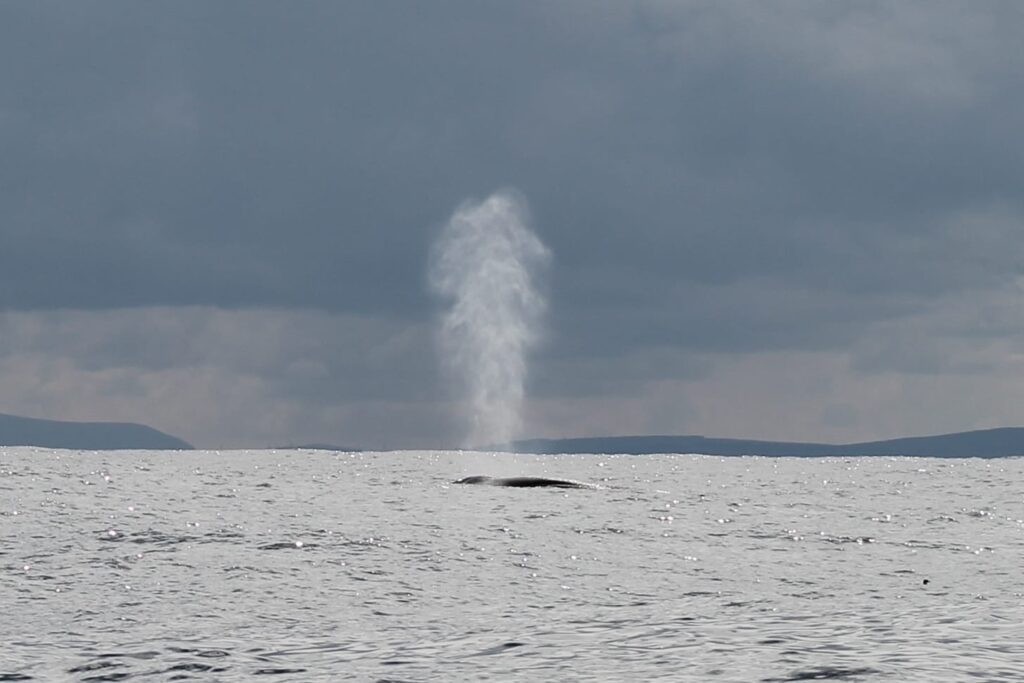
It is only the third fin whale sighting record to be validated by IWDG in Donegal bay and County Donegal, the first being in August 2020.
After capturing images and drone footage of the fin whale, the group went to investigate the humpback. They were astonished when they encountered a pair of humpbacks feeding.
#HBIRL24 had paired up with #HBIRL89 and were bubble net feeding which involves generating a bubble net around the prey in order to keep them contained, and then lunging through it with their mouths wide open engulfing the trapped prey.
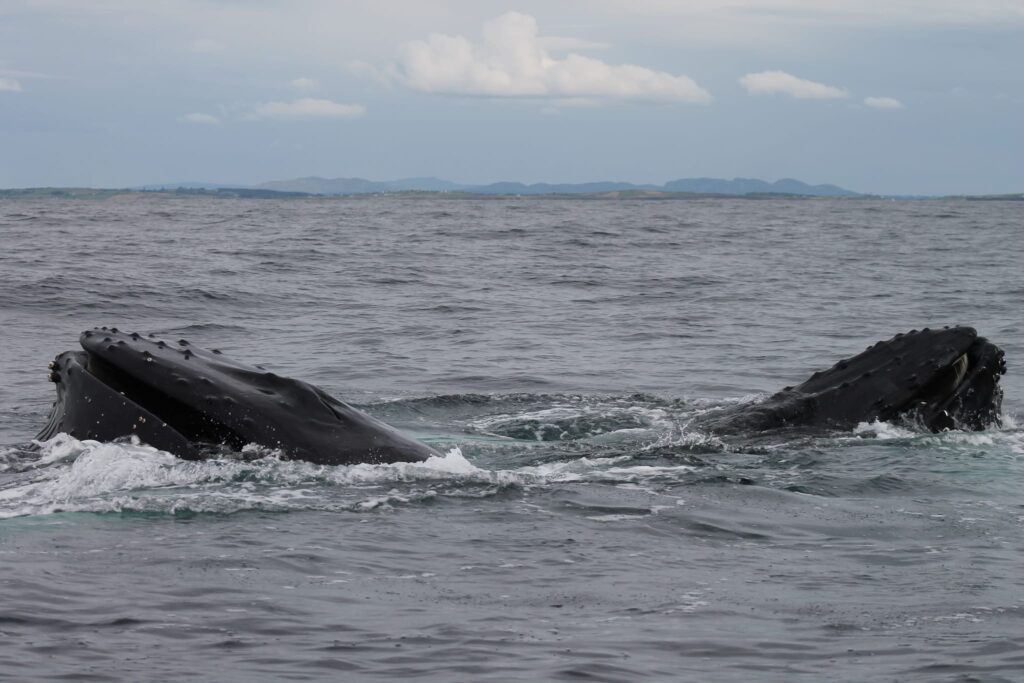
While documenting this behaviour, another humpback fluke was spotted in the distance, which was later identified as #HBIRL67, ‘Queen Medh’, who had been documented in Broadhaven Bay in Mayo during June 2023.
The show didn’t stop there, as splashes were spotted in the distance.
They raced over on the RIB to find a humpback breaching clear out of the water.
“It must have breached more than 50 times, really putting on a majestic display,” Darren said.
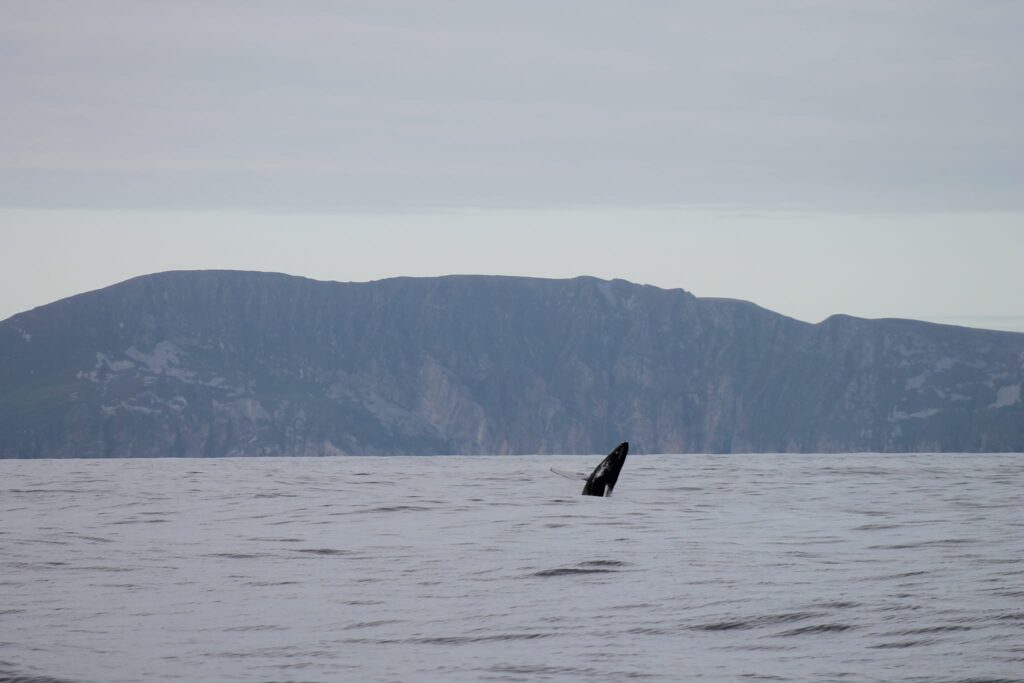
After watching in awe and snapping as many photos as they could, they finally got the coveted fluke shot. It was an animal that had never been recorded in Irish waters before and so was added to the Irish humpback whale catalogue and given a new ID, #HBIRL125, nicknamed ‘Scar’ due to the many healing lacerations on its back.
The group collected numerous images for the IWDG’s ID catalogue, drone footage and blow samples (collected via drone) from the whale for DNA analysis.
“It was truly magnificent to have encountered these incredible animals in this part of the world,” Darren said.
“In recent decades humpbacks have frequently been recorded in the Southwest Counties of Cork and Kerry, so it is very exciting to have them in the Northwest this year.”
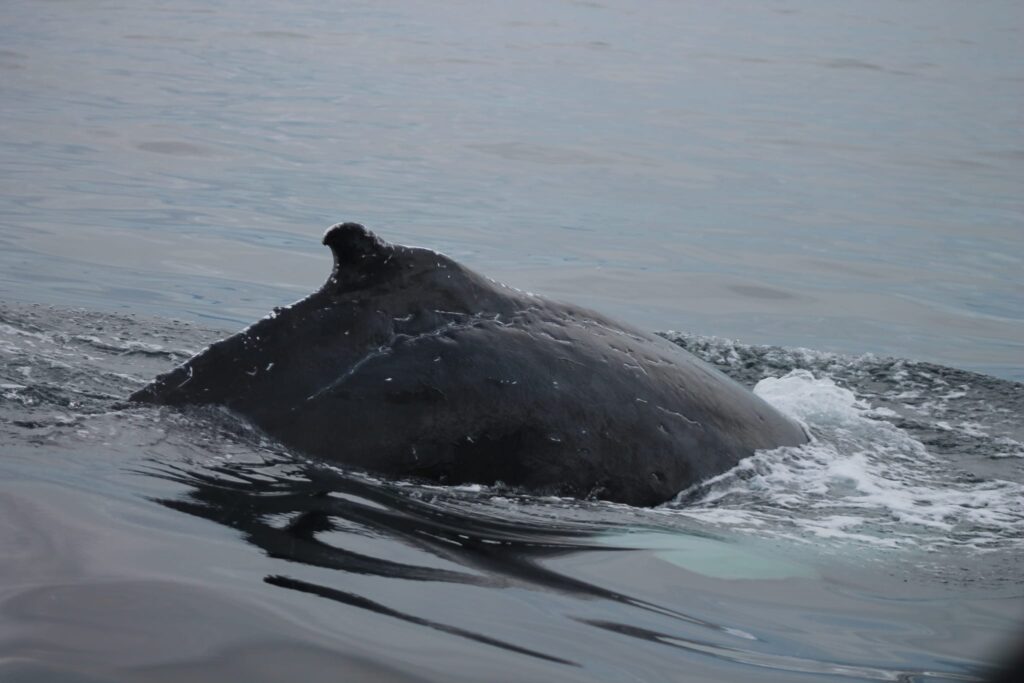
These animals may be seeking out new foraging grounds further North and data suggests that this is now a trend, as each year marine biologists are seeing growing evidence of “range expansion” among this Irish humpback cohort.
Any sightings of cetaceans (whales, dolphins and porpoises) and basking sharks should be reported by members of the public on the IWDG website www.iwdg.ie or on their Reporting App.








